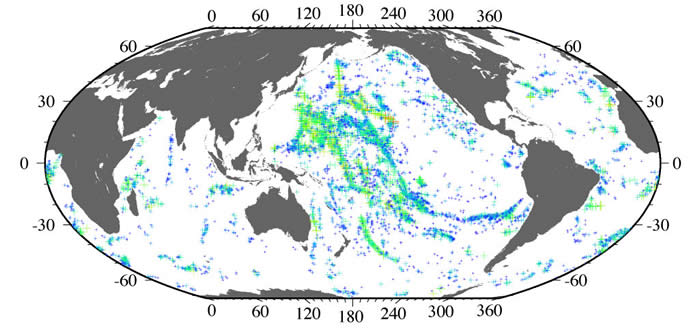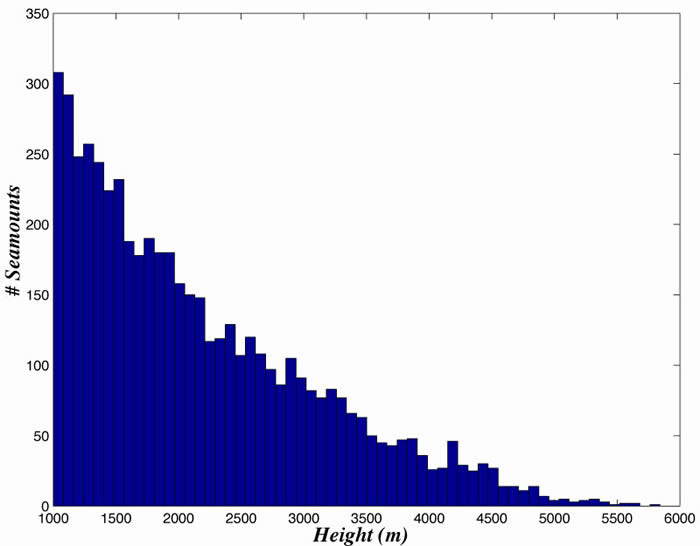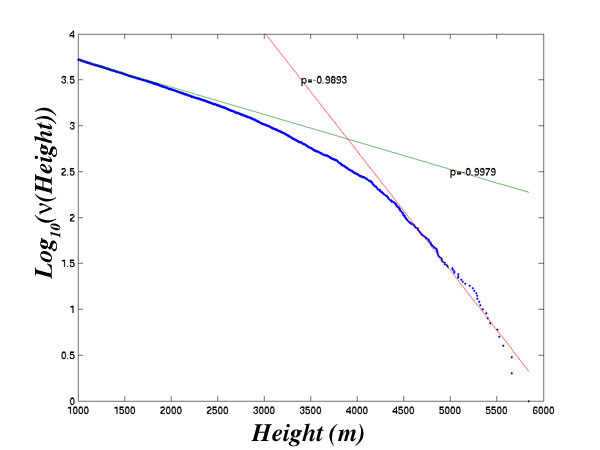
Global Seamount Distributions
The vast majority of Earth's volcanism occurs on the seafloors and the majority of the seafloor volcanism that forms seamounts occurs in the Pacific Ocean basin. The spatial distribution of seamounts tells us where and when seafloor volcanism has occurred in the past to better understand past plate motions and circulation in the earth's mantle. The size-frequency distribution of seamounts helps us understand how the mantle melts and how volcanoes work.

Spatial Distribution of Potential Seamounts
(predicted bathymetric relief >1000 m)
(warmer colors correspond to seamounts with greater relief)
Seamounts are not uniformly, or randomly, distributed in the ocean basins - they are spatially clustered.
Most linear chains of seamounts are formed by plates moving over hotspots.

Size-Frequency Distribution of Seamount Heights
(predicted bahtymetric relief > 1000 m)
Smaller seamounts are more abundant than large seamounts.
Seamounts too small to be detected by satellite gravity are far more abundant than those large enough to be detected.

Cumulative Distribution of Seamount Heights
(p = linear correlation coefficients for 100 largest & smallest seamounts)
( v(Height) = # seamounts larger than Height)
Log-linear cumulative size distributions are often considered indicative of a particular process of formation.
Two distinct linear slopes in a Log cumulative size distribution could suggest two distinct processes.
A clear discontinuity in slope would provide more convincing evidence than a gradual change in slope.